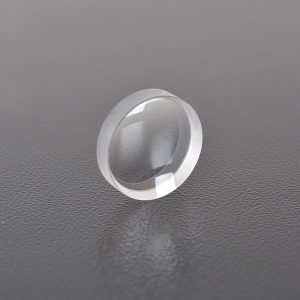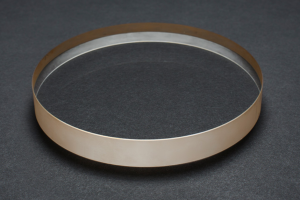
Lens Processing: from Raw Materials to Precision Optical Components
Lens are indispensable components in optical systems and are widely used in cameras, microscopes, telescopes, lasers, medical equipment and other fields. The quality of the lens directly affects the performance of the optical system, so the lens processing process requires extremely high precision and process level. This article will introduce in detail the basic process, key technologies and development trends of modern processing technology for lens processing.
1. Basic process of lens processing
Lens processing is a complex process, which usually includes the following main steps:
1. Raw material selection
The raw materials of the lens are usually optical glass or optical plastic. Optical glass has high transmittance, low dispersion and good chemical stability, which is suitable for high-precision optical systems. Optical plastics are light, low cost and easy to process, and are often used in consumer electronics. The choice of raw materials depends on the application scenario and performance requirements of the lens.
2. Blank molding
The raw materials are melted, cast or injection molded to form the preliminary shape of the lens. This step usually uses a mold to ensure the basic geometry and size of the lens.
3. Rough grinding and fine grinding
Rough grinding is the process of initially processing the curved surface of the lens to a shape close to the design, usually using a diamond grinding wheel. Fine grinding is to further improve the surface accuracy on the basis of rough grinding to ensure that the curvature radius and surface roughness of the lens meet the design requirements.
4. Polishing
Polishing is one of the most critical steps in lens processing. The purpose is to eliminate surface defects generated during the grinding process and obtain a smooth optical surface. Polishing is usually achieved by mechanical or chemical mechanical polishing (CMP) technology using polishing liquid and polishing pads.
5. Coating
In order to improve the transmittance of the lens, reduce reflection loss or increase the transmittance of a specific wavelength, the lens surface usually needs to be coated. Common coating materials include magnesium fluoride, silicon dioxide, etc., and coating technologies include physical vapor deposition (PVD) and chemical vapor deposition (CVD).
6. Inspection and correction
After processing, the lens needs to undergo rigorous inspection, including measurement of parameters such as surface roughness, curvature radius, and transmittance. If deviations are found, corrections are required to ensure the final quality of the lens.
2. Key technologies for lens processing
1. CNC processing technology
Modern lens processing widely uses CNC (CNC) technology, which controls processing equipment through computers to achieve high-precision and high-efficiency processing. CNC technology can accurately control processing paths and parameters to ensure the geometry and surface quality of the lens.
2. Ultra-precision processing technology
For high-precision optical systems, the surface roughness of the lens is required to reach the nanometer level. Ultra-precision processing technologies, such as ultra-precision grinding and ultra-precision polishing, can achieve sub-nanometer surface accuracy to meet the needs of high-end optical components.
3. Aspheric processing technology
Traditional lenses are usually spherical designs, but spherical lenses have aberration problems. Aspheric lenses can effectively reduce aberrations and improve the performance of optical systems. Aspheric processing technologies include CNC grinding, single-point diamond turning, etc., which can achieve high-precision processing of complex surfaces.
4. Automation and intelligence
With the development of Industry 4.0, lens processing is gradually developing towards automation and intelligence. Automated production lines can realize the whole process of automated processing from raw materials to finished products, reduce human errors and improve production efficiency. Intelligent technology optimizes processing parameters and improves product quality through big data, artificial intelligence and other means.
3. Development trend of modern lens processing technology
1. High precision and high complexity
As the performance requirements of optical systems continue to increase, the processing accuracy and complexity of lenses are also increasing. In the future, lens processing will pay more attention to the realization of nano-level precision and the processing of special shapes such as complex surfaces and microstructures.
2. Green manufacturing
The increase in environmental awareness has promoted the development of lens processing towards green manufacturing. Reducing waste in the processing process, reducing energy consumption, and using environmentally friendly materials will become important trends in future lens processing.
3. New materials and new processes
With the continuous emergence of new materials, such as optical ceramics and composite materials, lens processing technology also needs to be continuously innovated. At the same time, new processes such as 3D printing technology and laser processing technology also provide new possibilities for lens processing.
4. Customization and personalization
With the diversification of market demand, lens processing will pay more attention to customization and personalization. Through flexible manufacturing technology, we can quickly respond to customer needs and produce lens products that meet specific application scenarios.
Conclusion
Lens processing is a comprehensive technology that integrates material science, mechanical engineering, and optical technology. With the continuous advancement of science and technology, lens processing technology is also constantly developing, providing strong support for the performance improvement of optical systems. In the future, with the continuous emergence of new materials and new processes, lens processing will usher in a broader development space.
Hanzhong Brisun Optics Co., Ltd. Is the high precision optical element manufacturer provides customized production of Various optical lenses, including spherical lens, cylindrical lens, optical window, mirror, prism, filter, metal base mirror and other high-precision optical elements. The base materials include various optical glass, fused quartz, calcium fluoride (CaF2), zinc selenide (ZnSe), germanium (GE), silicon (SI), sapphire, metal and other materials. And provide antireflective film, high reflection film, spectroscopic film, metal film and other optical coatings.
Welcome to OEM and Purchasing!


